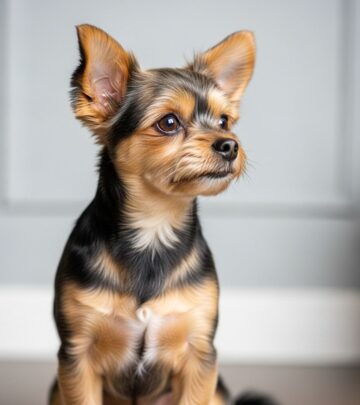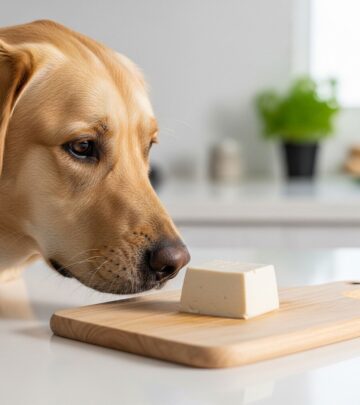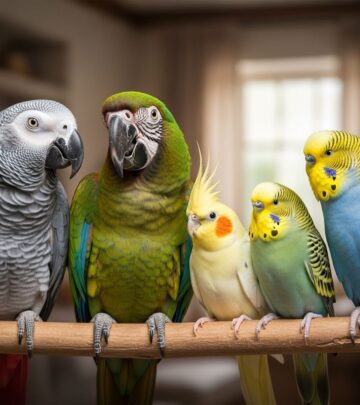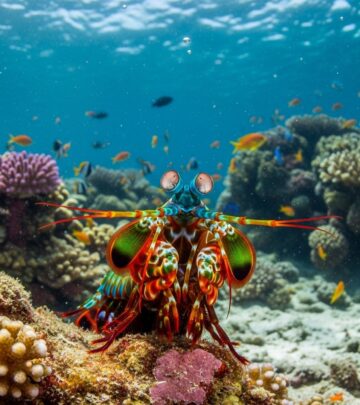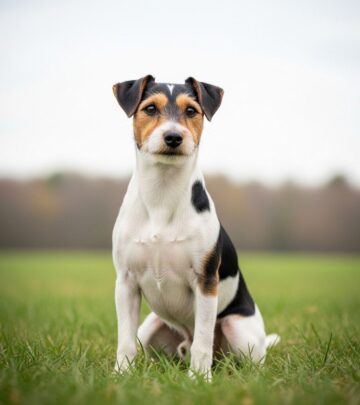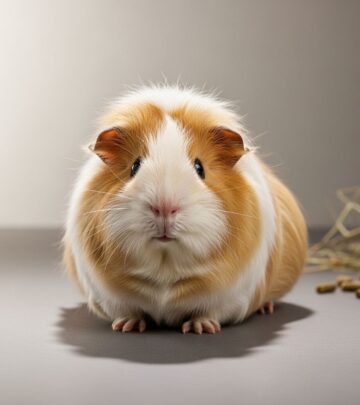Black Russian Terrier: 8 Essential Insights For Owners
Discover the majestic Black Russian Terrier: a powerful working dog with unwavering loyalty and impressive intelligence
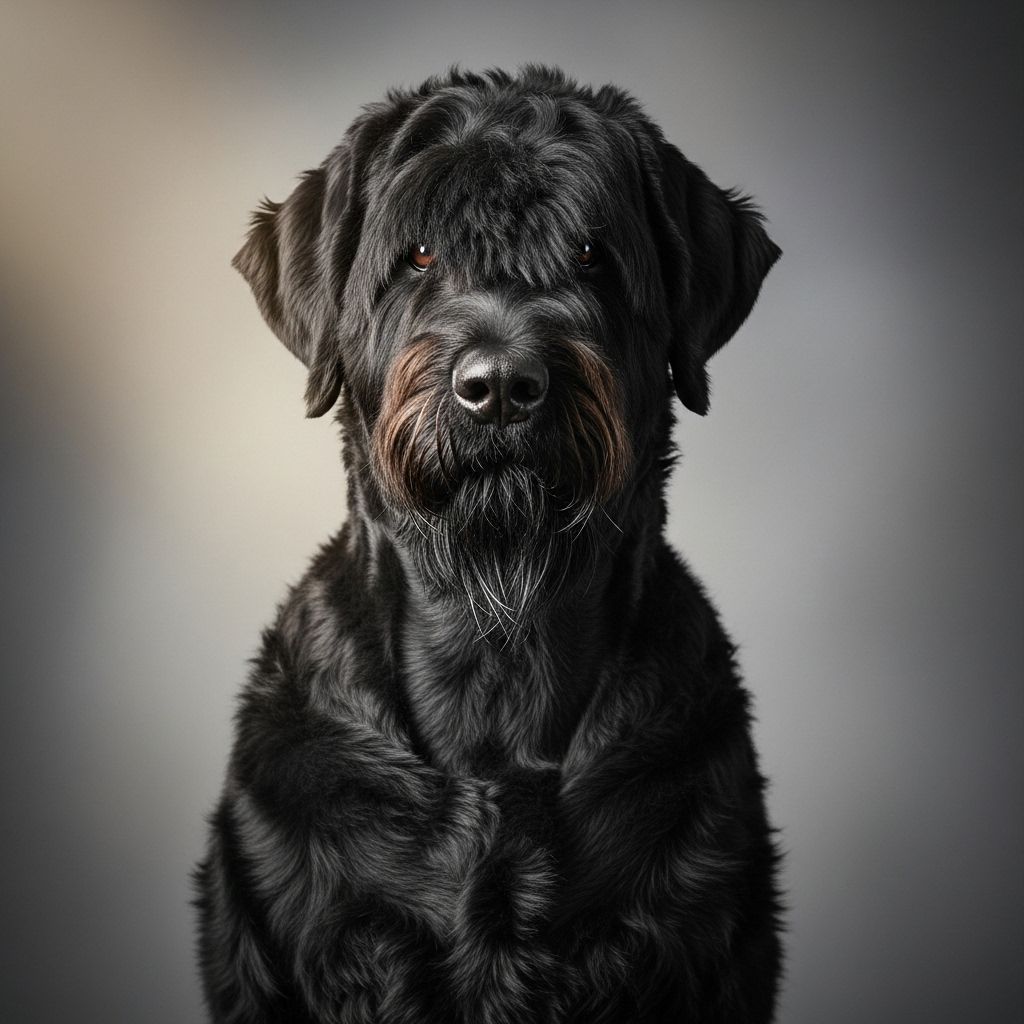
Image: HearthJunction Design Team
Black Russian Terrier Breed History & Origin
The Black Russian Terrier (BRT) emerged from the Soviet Union with a fascinating history that reflects its powerful nature and working abilities. Developed in the late 1940s and early 1950s by the Red Star Kennel (Krasnaya Zvezda), this breed was specifically created to serve as a military and working dog for the Soviet Army. Despite its name, the Black Russian Terrier is not actually a true terrier breed. It was developed through the careful crossing of approximately seventeen different breeds, including the Airedale Terrier, Giant Schnauzer, Rottweiler, Newfoundland, and various shepherd breeds like the Caucasian Shepherd Dog and South Russian Shepherd Dog.
The breeding program’s goal was to create an intelligent, powerful, and versatile working dog that could withstand Russia’s harsh climate conditions while serving effectively in military and police roles. The resulting breed proved exceptionally capable of performing guard duties, detection work, and other demanding tasks. By 1983, the Fédération Cynologique Internationale (FCI) recognized the Black Russian Terrier as a distinct breed, and the American Kennel Club followed in July 2004, classifying it as a member of the Working Group.
Today’s Black Russian Terrier has transitioned from primarily military and police work to become a versatile working dog, protective guardian, sporting competitor, and beloved family companion. This transition showcases the breed’s adaptability and intelligence, traits that were intentionally developed during its creation.
Black Russian Terrier Characteristics & Appearance
The Black Russian Terrier presents an impressive and commanding figure. These dogs are large, robust, and powerfully built with substantial bone structure and well-developed musculature. The breed exudes strength, confidence, and agility despite its size. True to its name, the BRT sports a coarse, all-black coat that may occasionally show some gray hairs. This double coat consists of a coarse, wiry outer layer and a softer, dense undercoat that provides excellent protection against harsh weather conditions.
Males stand between 27 and 30 inches tall at the shoulder (with 27-29 inches being ideal), while females measure slightly smaller at 26 to 29 inches (ideally 26-28 inches). Weight typically ranges from 100-150 pounds for males and 80-120 pounds for females. The Black Russian Terrier is slightly longer than tall, with a height-to-length ratio of approximately 9.5 to 10, giving the dog a balanced, proportional appearance.
The BRT’s head is large and substantial with a moderately broad, flat skull and strong jaws. The eyes are medium-sized, oval, and dark in color, conveying an alert, intelligent expression. The ears are medium-sized, triangular, and set high on the head, typically hanging down close to the cheeks. The tail is traditionally docked relatively short in countries where this practice is permitted.
One of the breed’s most distinctive features is its beard and eyebrows, formed by the longer hair on the face, which gives the BRT a characteristic stern, dignified expression that reflects its working heritage and protective nature.
Black Russian Terrier Temperament & Personality
The Black Russian Terrier possesses a temperament that perfectly balances alertness and calm confidence. These dogs are known for their courage, self-assurance, and unwavering loyalty to their families. The ideal BRT has a stable, reliable temperament with natural protective instincts that make them excellent guardians without being needlessly aggressive.
Intelligence is a hallmark of the breed, with BRTs demonstrating exceptional problem-solving abilities and a strong capacity to learn and execute commands. However, this intelligence comes paired with an independent streak, which means they need an owner who can provide firm, consistent, and patient training. The Black Russian Terrier responds best to positive reinforcement methods rather than harsh discipline.
With family members, these dogs are typically affectionate, devoted, and even playful despite their imposing size. They form extremely close bonds with their owners, more so than many other breeds, and prefer to be involved in family activities rather than left alone. BRTs are generally good with children, especially when raised with them, though their size means supervision is always recommended with very young children.
Toward strangers, the Black Russian Terrier is naturally aloof and watchful. They don’t immediately warm up to new people, instead taking time to assess whether someone poses a threat to their family. This reserved nature with strangers makes proper socialization from puppyhood absolutely essential to ensure they can distinguish between normal situations and genuine threats.
Living Needs & Adaptability
Black Russian Terriers demonstrate remarkable adaptability to various living situations, provided their core needs for exercise, mental stimulation, and human companionship are met. While one might assume a dog of this size requires vast space, BRTs can adapt surprisingly well to apartment living if given adequate daily exercise. They are not outdoor dogs and should never be relegated to a life in a kennel or isolated in a yard – the Black Russian Terrier thrives when integrated into the family’s living space and daily activities.
The BRT’s thick, weather-resistant coat allows them to tolerate cold climates exceptionally well, though they may struggle somewhat in extreme heat due to their dark color and dense undercoat. In hot weather, owners should provide shade, fresh water, and limit strenuous exercise to cooler parts of the day.
This breed’s strong protective instincts make them naturally territorial, which means secure fencing is essential if they have access to a yard. Due to their size, strength, and protective nature, the Black Russian Terrier is generally not recommended for first-time dog owners. They require an experienced hand who understands canine behavior and can provide consistent training and clear boundaries.
The BRT’s adaptability extends to their roles as well – they excel as family guardians but can also serve as therapy dogs, service animals, police K-9 units, and even search and rescue dogs when properly trained. This versatility speaks to their intelligence and willingness to work alongside humans in various capacities.
Training & Exercise Needs
Training a Black Russian Terrier requires commitment, consistency, and an understanding of the breed’s intelligent yet sometimes stubborn nature. Early socialization and obedience training are absolutely essential for this powerful breed. BRTs need exposure to various people, environments, and situations from puppyhood to develop into well-adjusted adults who can properly assess potential threats versus normal everyday occurrences.
The Black Russian Terrier responds best to positive reinforcement training methods that emphasize rewards and praise rather than punishment. Their intelligent minds need mental challenges as much as their bodies need physical exercise. Training sessions should be varied and engaging to prevent boredom. Many BRT owners find success with advanced obedience, rally, agility, tracking, or protection sports that give these dogs both mental and physical outlets for their working drives.
In terms of exercise, Black Russian Terriers require daily moderate to vigorous activity. A combination of walks, play sessions, and training work typically satisfies their needs. While not hyperactive, they do possess good stamina and benefit from having a job to do or purpose to fulfill. Without adequate physical and mental stimulation, BRTs may develop destructive behaviors or become excessively protective.
It’s important to note that young Black Russian Terriers should not be over-exercised while their joints and bones are still developing. Controlled exercise on soft surfaces is preferable until they reach physical maturity at around 18-24 months of age.
Grooming Requirements
The Black Russian Terrier’s distinctive coat requires regular, committed grooming to maintain its health and appearance. Their harsh, double coat doesn’t shed excessively, but it will mat without proper care. Owners should plan to brush their BRT thoroughly at least 2-3 times per week, using a pin brush and slicker brush to work through the dense coat layers.
Professional grooming or thorough at-home grooming sessions are typically needed every 4-6 weeks. The coat should be stripped rather than clipped to maintain its proper texture and weather-resistant qualities, though some pet owners opt for shorter clips for easier maintenance. Special attention should be paid to the facial furnishings (beard and eyebrows), which need regular cleaning to prevent food particles from accumulating and causing skin issues.
The BRT’s ears need regular checking and cleaning to prevent infections, and nails should be trimmed regularly as these powerful dogs can develop foot problems if their nails grow too long. Dental hygiene should not be overlooked; regular tooth brushing helps prevent periodontal disease.
While the grooming requirements are substantial, this regular handling provides an excellent opportunity for owners to check for any lumps, skin issues, or other potential health concerns while also strengthening the bond between dog and owner.
Health & Lifespan
The Black Russian Terrier generally enjoys a good lifespan of 12-14 years, which is impressive for a dog of its size. As with many large breeds, they can be prone to certain genetic health conditions that responsible breeders screen for. Prospective owners should always seek breeders who conduct appropriate health testing on their breeding stock.
Hip and elbow dysplasia are concerns in the breed, making it important to maintain appropriate weight and exercise levels, particularly during growth periods. Progressive retinal atrophy (PRA) and other eye conditions can occur, so regular veterinary eye examinations are recommended. Some lines may be prone to heart issues such as dilated cardiomyopathy.
The breed can also experience hyperuricosuria (elevated levels of uric acid in the urine), which may lead to bladder stones. A condition known as juvenile laryngeal paralysis and polyneuropathy (JLPP) has been identified in the breed; genetic testing can identify carriers of this condition.
Responsible owners should schedule regular veterinary check-ups, maintain appropriate weight, provide quality nutrition, ensure regular exercise, and be attentive to any changes in behavior or physical condition that might indicate health problems.
Is the Black Russian Terrier Right for You?
The Black Russian Terrier makes an exceptional companion for the right owner, but this breed is not suited to everyone. Ideal BRT owners are experienced with dogs, understand canine behavior, have time for training and socialization, and can provide consistent leadership. The breed does best with active families who include their dog in daily activities and can fulfill the BRT’s need for both physical exercise and mental stimulation.
Potential owners should honestly assess whether they can meet the breed’s grooming requirements, which are substantial and ongoing. They should also consider the financial implications of feeding and caring for a large dog with specific health screening needs. The protective nature of the Black Russian Terrier means owners must be committed to thorough socialization and training from puppyhood through adulthood.
These dogs form extremely strong bonds with their families and don’t do well when left alone for extended periods. Their size and protective instincts mean they require secure containment and careful management in public settings. However, for those who can meet their needs, the Black Russian Terrier offers unparalleled loyalty, protection, and companionship that few other breeds can match.
Frequently Asked Questions (FAQs)
Q: Are Black Russian Terriers actually terriers?
A: Despite the name, Black Russian Terriers are not true terriers. They were developed from approximately seventeen different breeds, including the Airedale Terrier, Giant Schnauzer, Rottweiler, and various shepherd breeds. They’re classified in the Working Group by the American Kennel Club.
Q: Do Black Russian Terriers make good family pets?
A: Black Russian Terriers can make excellent family companions for the right household. They form strong bonds with family members and are generally good with children when properly socialized. However, due to their size, protective nature, and training needs, they’re best suited to experienced dog owners.
Q: How much exercise does a Black Russian Terrier need?
A: BRTs require moderate to vigorous daily exercise. They benefit from a combination of walks, play sessions, and mental challenges. While not hyperactive, they need regular activity to prevent boredom and potential behavior problems.
Q: Are Black Russian Terriers good apartment dogs?
A: Surprisingly, Black Russian Terriers can adapt well to apartment living provided they receive adequate daily exercise and mental stimulation. They prefer being with their family rather than alone in a yard, making their living space less important than the time and attention they receive.
Q: How often do Black Russian Terriers need grooming?
A: Black Russian Terriers require brushing 2-3 times weekly and more thorough grooming every 4-6 weeks. Their coarse, double coat needs regular attention to prevent matting, and their facial furnishings require special care to keep clean and free of food particles.
References
- https://www.akc.org/dog-breeds/black-russian-terrier/
- https://images.akc.org/pdf/breeds/standards/BlackRussianTerrier.pdf
- https://marketplace.akc.org/puppies/black-russian-terrier
- https://en.wikipedia.org/wiki/Black_Russian_Terrier
- https://guardianbearskennel.com/characteristics-black-russian-terrier
Read full bio of medha deb

